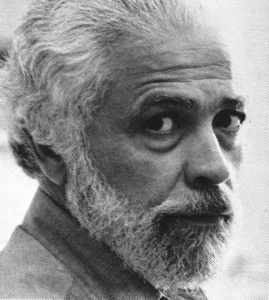
MEDGAR WILEY EVERS. 5’ X 8”, BRONZE AND OAK
Born: Baltimore, Maryland, 28 March 1925. Education: University of Iowa, Iowa City, 1946-51, B.A., M.A.; University of North Carolina, 1961. Military Service: United States Air Force, 1943-46: private first class. Family: Divorced; two children. Career: Chairman and vice-chairman, Department of Art, North Carolina College (now North Carolina Central University), Durham, 1953-64, State University of New York at Binghampton, 1968-72, 1974-77, 1982-85. Artist-in-residence, Yaddo, 1966, Western Michigan University, 1969. Traveled in Italy, 1975-76. Awards: Carnegie Foundation grant, 1952-53; Maryland Artists Annual Prize for Portraiture, Baltimore Museum of Art, 1956; research grants, North Carolina College, 1956, 1957, 1958, 1960, 1961, 1962; State University of New York Fellowship, 1966, 1968. Died: 26 November 1996.
(Nzegwu, N. (1997). Wilson, Ed(ward N., Jr.): American sculptor. In T. Riggs & Schomburg Center for Research in Black Culture. St. James guide to Black artists. (pp. 576-578). Detroit: St. James Press)

Mr. Wilson had been deeply involved in the civil rights struggle in North Carolina, and the experience influenced his art. Many of his works also reflected his early interest in painting. For all their varied shapes, the focal points of a Wilson sculpture are often small-scale images on a sometimes hidden surface.
At Boys and Girls High School in Brooklyn, for example, the message of Mr. Wilson’s ”Middle Passage,” ostensibly three gently curving slabs of concrete nestled together outside the school, does not become apparent until one takes a second, closer look, squeezing between the slabs to examine narrow bands of bronze depicting the horrors of a slave ship. (Source)

Mr. Wilson produced some two dozen sculptures, working variously in bronze, aluminum and red hickory, but the very aspect of his work that made him a prized local artist in Binghamton helped keep him from receiving serious critical notice.
That’s because Mr. Wilson worked primarily on civic commissions, and as a result his sculptures were generally not displayed in galleries or museums, but in public spaces — parks, schoolyards and college campuses — where they rarely receive more than a passing glance or are such a part of the landscape that they are really not seen at all by those who pass them very day.
Those who did take a second look at Mr. Wilson’s work were generally impressed. In their book, ”A History of African-American Artists” (Random House, 1992), Romare Bearden and Harry Henderson devoted a chapter to Mr. Wilson, ranking him as a significant artist and citing works like ”Second Genesis” and ”Jazz Musicians,” both at schools in Baltimore, where he was born. (Source)


Taken from the book Romare Beardon wrote undoubtedly.
His Daughter
My Mom owns a piece of art called: Spirit of 76. The signature is, Ed Wilson, 64. It’s a print 27/35. I was wondering if it’s the same artist?